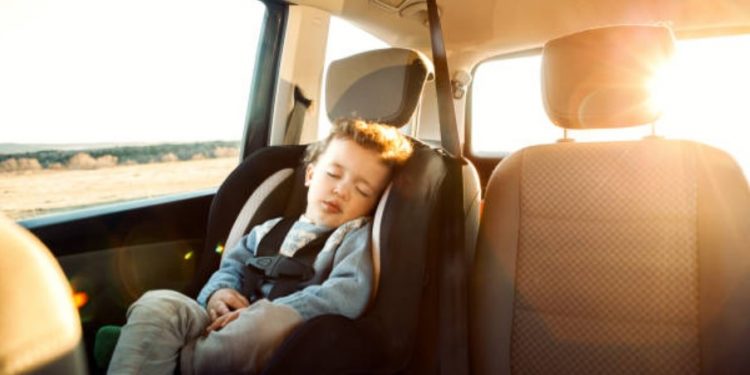Even the most safety-conscious of parents are prone to making mistakes when it comes to keeping their children safe inside their motor vehicles. Babies and toddlers are especially vulnerable since they are so lightweight and unable to react to a dangerous situation like an imminent car crash.
That’s why child safety seats were invented and also why their designs are being improved upon on an annual basis. But car seats only go so far in protecting little children. Even overtired kids who all too often “bob” their heads (sometimes violently) when falling to sleep can experience injury.
But once again necessity proved the mother of invention when the car seat head support for toddlers was invented. This device prevents “bobbing head syndrome” and prevents your toddler’s head from falling sideways or forwards while napping inside the vehicle.
But car seats and head supports for toddlers are just the tip of the iceberg when it comes to keeping little children safe in and around cars, SUVs, and trucks. Says a new report, cars present lots of dangers to small children. To keep your son or daughter safe, you need to learn precisely what these dangers are and, accordingly, follow some fairly simple but effective safety precautions.
Three immediate steps you can take are first, never leave your child alone in a car under any circumstance. Second, you need to teach your child that a car is not a big toy that they can play in and around. Third, always make a check all around the car before you get behind the wheel. This will ensure that no little children are playing in front of the vehicle or behind it.
Here are more ways to keep your child safe inside and outside your vehicle.
Staying Safe Inside the Car
Leaving a child alone inside a car is one of the most dangerous things a parent can do. Here are just a few of the main safety hazards for kids being left alone inside cars and how you can avoid them.
Heat Hazard
It’s a fact that the heat inside a car can elevate much more rapidly than outdoor temperatures, especially in warm/hot climates and during the summer months. This fact is true for both cars that are entirely closed or even with a window cracked open.
According to studies, temperatures in cars can rise 20 degrees in less than 10 minutes. This can result in a child experiencing organ damage and/or permanent brain damage within a few minutes of being left alone inside a hot vehicle.
Strangulation Hazard
It’s not hard for a child to lean on an automatic window switch and close the window on him or herself. The child can catch his neck or head and strangle himself.
Other Hazards
If the keys are left inside the ignition, it’s easy for a child to start the car. If they engage the gas, the child can run people over or crash into another vehicle or building. You don’t need to leave the keys in the ignition for a child to release the emergency brake which can result in the car rolling downhill.
Keeping Your Child Safe Around the Vehicle
Little kids who play around the car can be very difficult if not impossible to spot from the vantage point of the driver’s seat. Their little bodies will be hidden by the vehicle’s “blind spot.” This is the area around the car not visible even when using the mirrors.
Here are some ways to keep your child safe around your vehicle:
Take Precautions
Take a few seconds to walk all-around your vehicle prior to getting behind the wheel. This will allow you to see for yourself if a child or children are playing around it. When you back out of the driveway, be aware of where the kids are. Make sure they are standing in a place where they can be clearly spotted. At the very least, have another adult act as a spotter for you outside the vehicle.
After starting your vehicle, you should roll down the window or windows so you can hear what’s happening outside. Proceed to back out slowly, cautiously.
Teach Your Children How to Be Safe and Responsible Around Cars
Take the time to instruct your children to move away from a car after it’s been started. Let them know how to recognize when a “vehicle is on.” They should look for things like red brake lights, and white lights which indicate a car is presently backing up. Make them aware of obvious things like engine noise, for instance. It can mean the difference between life or death.















































